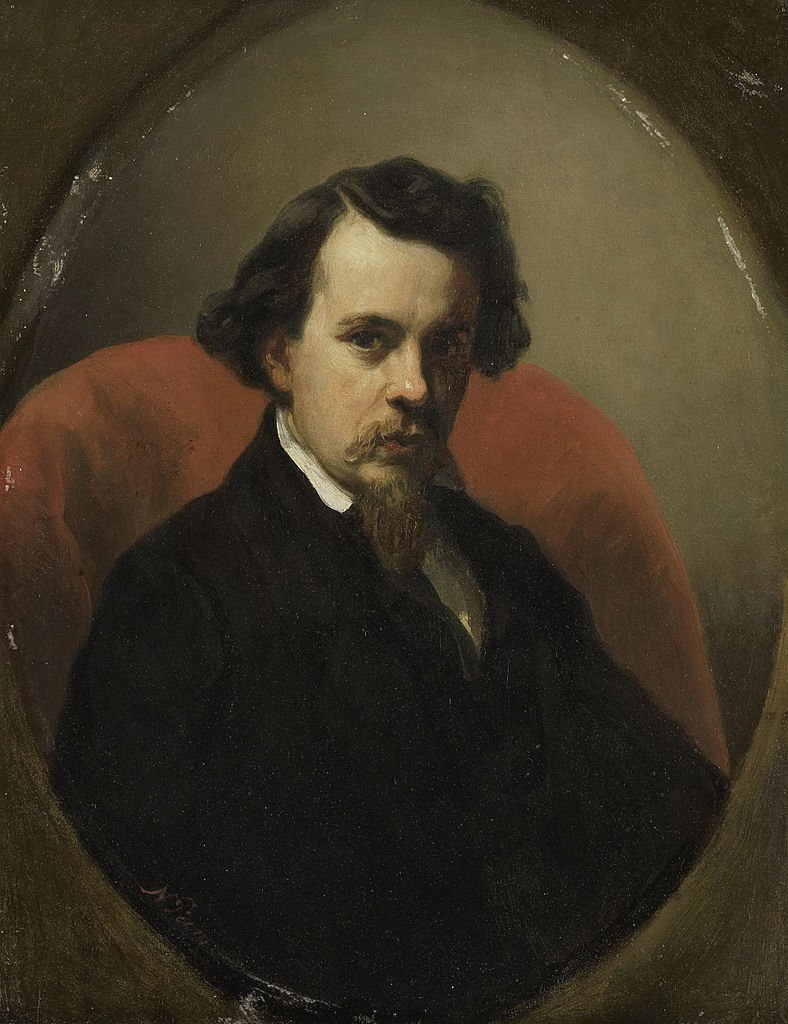
…………………………………………In 1834, whilst attending the The Hague Drawing Academy Leickert gained a First Prize in the Third Grade which allowed him to enter the studio of Wijnand Nuyen. It was also at this establishment that he attended classes in architecture and ornamental drawings which was a perfect artistic grounding for him and proved a great help when he went on to paint his cityscape depictions.
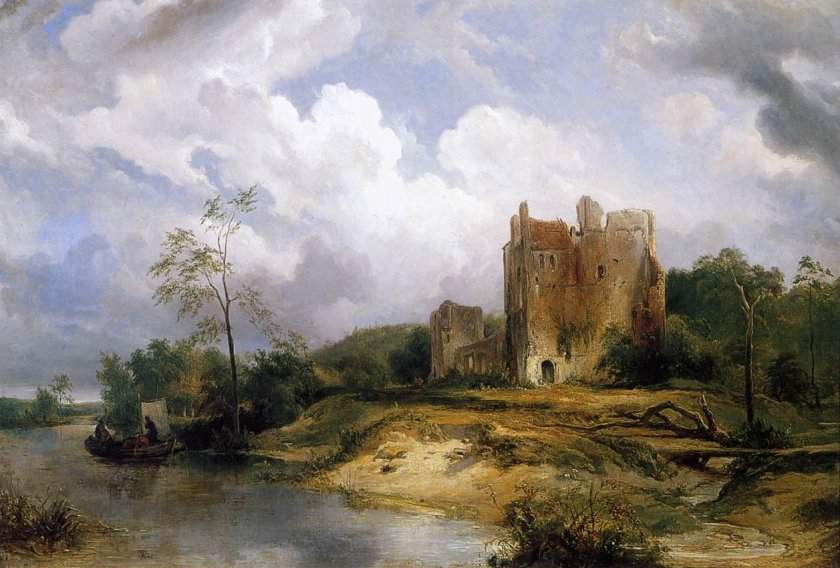
A fellow student and friend of Charles Leickert from The Hague Drawing Academy Wijnand Nuijen opened his own atelier in 1833 and sometime later, in the mid 1830’s, it is known that Leickert worked there. It was through Nuijen that Leickert, although he carried on with his cityscape depictions, became more interested in the painting of nature. Dutch landscape paintings became very popular in the nineteenth century and there was a great demand for works depicting rivers and windmills. Many looked upon this painting genre as being a testament to the greatness of their country and the oneness with God. The nineteenth century Dutch merchant and poet, Reijer Hendrik Someren, in his lecture to the Rotterdam Drawing Society in 1830 summed up this feeling when he talked about:
“…Vaderlandsche goede zeden, Vaderlandsche genoegens, Vaderlandsche huiselijkheid…”
(Fatherlandish virtues, Fatherlandish pleasures, Fatherlandish domesticity)
It was the belief that nature and God are as one. It was a pantheistic view that all reality is identical with divinity.

Leickert’s time with Nuyen did not last long as the latter died in 1839, at the young age of twenty-six. After the death of his mentor Leickert went to the studio of Andreas Schelfhout, an artist who had once taught Nuyen. Nuyen had married one of Schelfhout’s daughters and it was incumbent on Schelfhout to take on his late son-in-law’s atelier and his pupils. Schelfhout at the time was one of the highest paid artists of The Hague, one of the most influential Dutch landscape artists of his century and one of the most sought-after teachers.
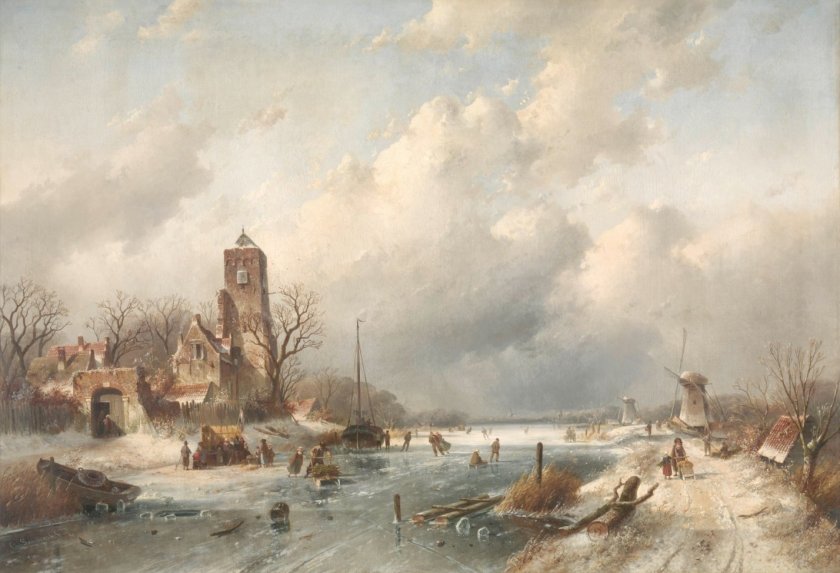
Leickert flourished as a painter under the mentorship of Schelfhout. Schelfhout and been known for his wonderful landscapes and certainly influenced Leickert and his first winter landscape was greeted by an art critic who stated:
“…Mr C Leycert, of The Hague, demonstrates with a winter scene with some buildings that he has turned the lessons of his master to good use…”
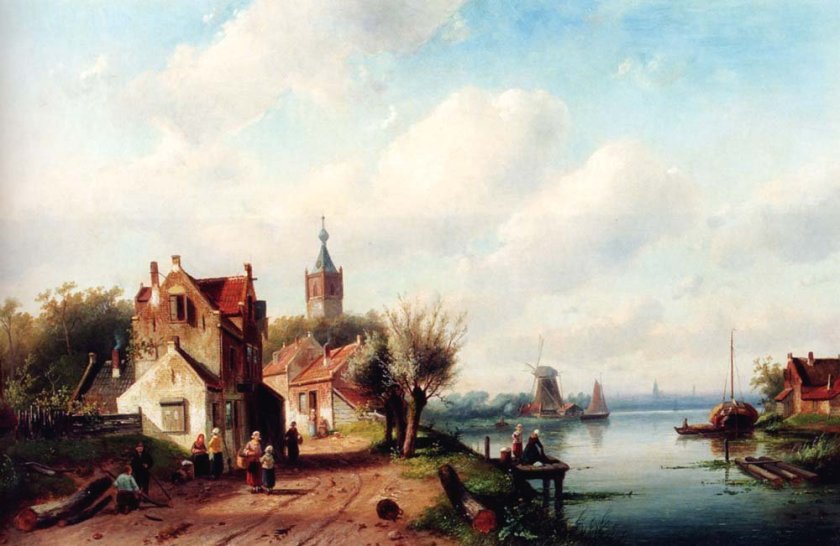
Despite that first winter landscape work Leickert’s first love was always for summer landscapes. Although the landscapes were his own work, critics were often keen to point out the influence of Schelfhout on the depiction. One river scene of his which was shown at an exhibition was commented upon by the art critic of the art newspaper, Kunstkronijk, wrote of this influence:
“…A river view by M. Leickert, in The Hague, is well drawn and painted, soft and charming in tone, in the manner of Schelfhout, whom he fortunately seems to be emulating…”
However, there were other critics who thought that this copying of Schelfhout’s style was not beneficial to Leickert and wondered if it were not for Schelfhout, Leickert’s works may not even exist, one wrote:
“…Would not the handsome work by C. Leickert be less pleasing if we were less accustomed to the winter views by Schelfhout?…”
Maybe such implied criticism was to be expected as Schelfhout was adored by critics and the public and many were annoyed that Leickert was merely copying the great man’s style. However, for Schelfhout, Leickert was the most gifted of his pupils and probably the copying of his style by his pupil may have endeared him more to the master.
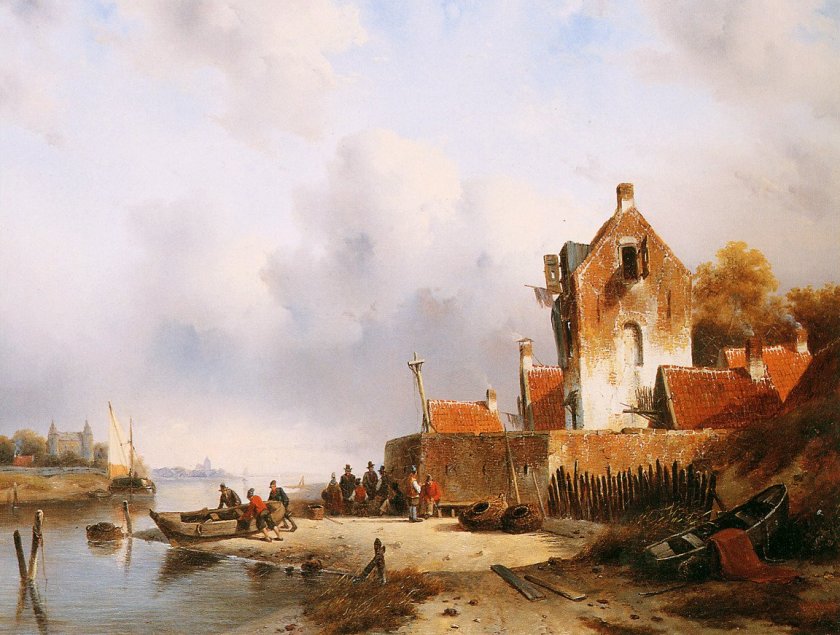
Over time Leickert liked to produce landscapes which incorporated stretches of water, whether it be lakes or rivers. They were characterised by pale hues. Take for example his painting Summer River View which he completed around 1847 and is now housed in the Douwes Gallery in Amsterdam. Look at the colours used for the sky and water. Look how many different tones of blue and grey he has used and these are contrasted by the golden/sandy tones of the shore. Our eyes are always drawn to the red colour in a painting and in this case, we immediately note the red roofs of the houses in the middle ground but we are also drawn to look at the launching of the boat because one of the men pushing the boat towards the water wears a bright red jacket. From there our eyes wander further into the depiction towards the white-sailed boat which is moored across the river, behind which is a castle in the background. It is a fascinating work and one which makes us carefully search the painting so that we do not miss any of the details. This painting, like many of Leickert’s landscapes, incorporate a certain amount of staffage. Staffage, in painting, are the human and animal figures depicted in a scene, especially a landscape, that are not the primary subject matter of the work, but in the case of Leickert the staffage was always subservient to the landscape and there were rarely any facial expressions seen on the small characters. For Leickert, it was all about the beauty of the landscape.
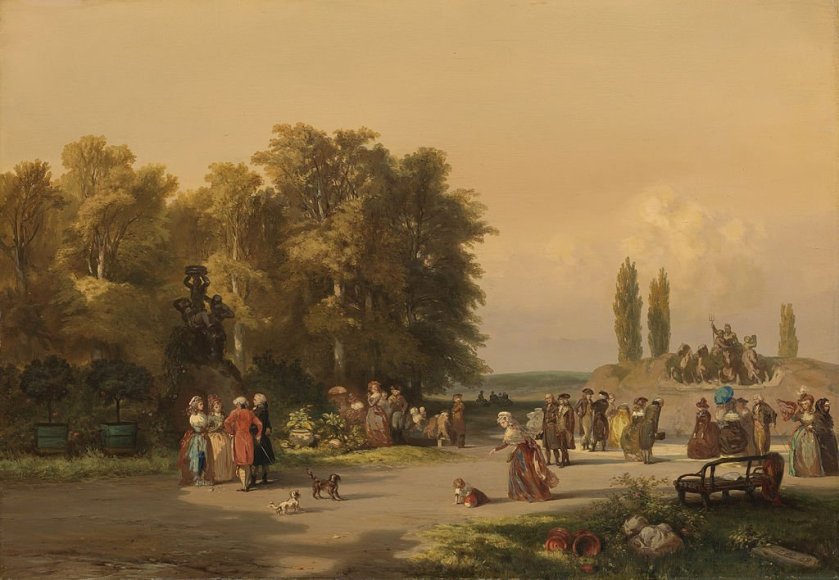
Leickert was twenty-five years old when he first journeyed outside his homeland, a year after he was released from the Civic Orphanage in 1841. He visited Germany with his fellow painters Carl Eduard Ahrendts and Charles Rochussen, a former fellow student of Nuyen. He often collaborated with Rochussen with his landscape work arranging for Rochussen to add the staffage in his landscape depictions.
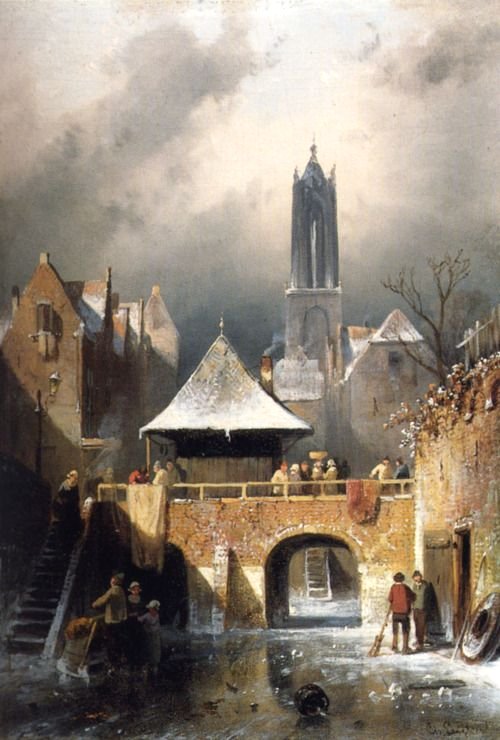
By the mid-1840’s Leickert’s paintings had increased in popularity and he was starting to accumulate money from their sales. Having left the orphanage he moved to rented accommodation in Nieuwe Molstraat which was in the neighbourhood where he had spent his early childhood. It is thought that he may also have, by this time, his own studio.

In 1847, we know that Leickert was involved with the formation of the Pulchri Studio that year, as his signature was on the Pulchri Studio Regulation. The Pulchri Studio, which I mentioned in my blogs about Hendrik Mesdag, was established in 1847. It is a Dutch art society, art institution and art studio based in The Hague. It was modelled on the successful artist colony of Barbizon south of Paris in the forest of Fontainebleau and still exists today. The chairman of this organisation at its inception and for a number of years was Leickert’s old mentor Bartholemus van Hove.
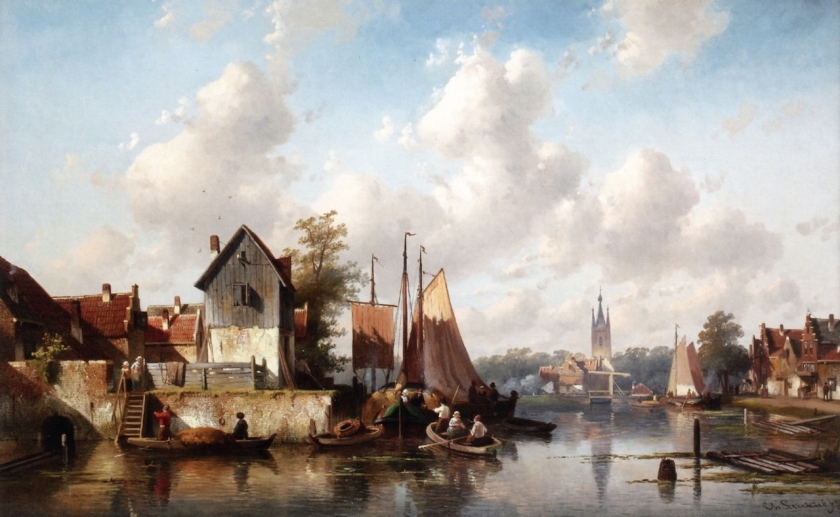
In 1848 Leickert left The Hague and moved to Amsterdam. So why did he move as we know his paintings were selling well in the city? Maybe the reason was that Leickert, along with many of Schelfhout’s pupils, were churning out numerous landscape works and Leickert may have believed that the landscape market in The Hague was reaching saturation point. Maybe he also wanted to go out on his own and break away from Schelfhout. Whatever the reason, Leickert left The Hague and rented a house in Kalverstraat in Amsterdam which he shared with Rochussen. From there, their collaborative work continued. He became a member of the Amsterdam art society Arti et Amicitiae (art and friendship) which was founded in 1839 and still exists today. Historians have made a comparison between the art establishments of Pulchri Studio in The Hague and the Arti et Amicitiae society in Amsterdam and believed the latter to be classier, which was just as Leickert liked. Later, in 1856 he became a member of the Royal Academy of Drawing of Fine Arts of Amsterdam and became a member of the Board of Governors of the Academy.
……………………………. to be concluded
—————————————————————————
Most of the information for the three blogs on Charles Leickert came from excellent 1999 book entitled Charles Leickert 1816-1907: Painter of Dutch Landscape by Harry J Kraaij
